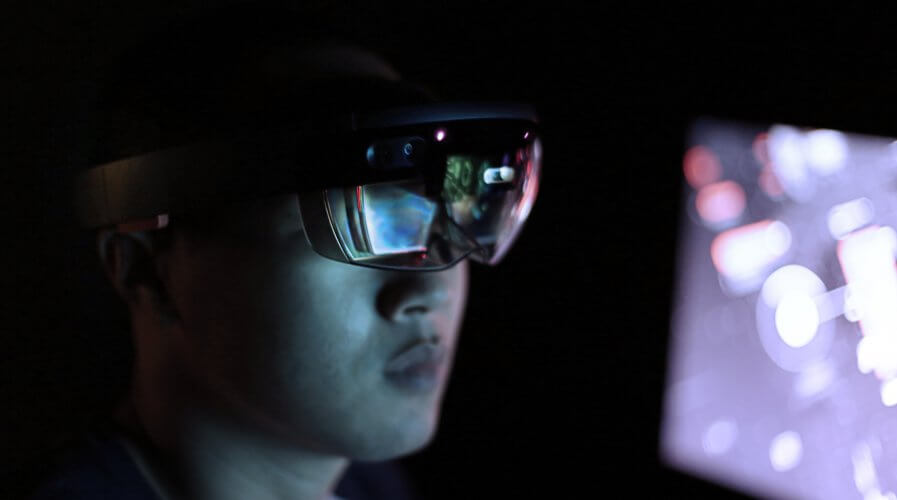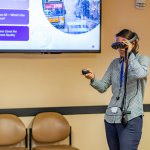
AR developers must focus on how the hardware’s usability. Source: Shutterstock
Why usability will be key to the explosion of industrial AR
Virtual reality has its applications in the enterprise when it comes to training and design, but it’s Augmented Reality (AR) that will likely have real staying power.
From providing a cross-section of a jet turbine to an aviation engineer as they construct a plane to helping doctors learn about anatomy among a suite of other current applications, Augmented Reality is already doing just what its name promises — enhancing our real-world eye-line with supplementary information that enhances our ability to carry out tasks.
These capabilities will become commonplace once their value is realized and the technology comes at even more accessible price points. But hardware will also need to be comfortable and intuitive for workers to wear devices around the clock.
According to research by ABI, it is developments in user interfaces (UI) — the emerging integration of interaction methods we have with devices such as AR smart glasses — that will drive the market to a value of US$100 billion by 2024.
Businesses that focus not just on AR itself, but also how users can interact effortlessly with the equipment during their work will be best set to succeed.
At the current stage of hardware maturity, Augmented Reality (AR) smart glasses and AR Software Development Kits (SDKs) support a greater range of interaction methods than ever before.
Now entering the UI mix alongside traditional controllers and smartphones, however, are technologies like voice control, gesture recognition, and eye-tracking, which are making AR UX more practical and flexible for industrial adopters.
It’s not a stretch to imagine the potential of such advances; close one eye, and a worker could be met with the virtualized guts of the machinery in front of them; verbals cues like ‘show me temperature’ could control the data overlaid in the field of view; the swipe of a hand could clear all information.
A researcher from ABI, Eleftheria Kouri, said; “The decision around the most efficient input method and UI design strongly relies on the nature of the target task or content, the user’s potential environment, and the type of the AR device.”
The varied application of AR glasses across industries will influence its design and pairing of input methods and UI, allowing every adopter to select the equipment, and tweak its usability to best suit their applications.
Aerospace firm Boeing recently adopted of AR glasses in its assembly process and training. It claims the equipment has led to a 40 percent boost in productivity and a 30 percent reduction in job time.
Outside of heavy industries, AR can help designers visualize things like wallpaper, furniture, and decoratives will look in blank-canvas empty space, for example, while playing with scales and other parameters in their real-world setting. A CEO may use it to visualize business data, helping them to make key decisions on the fly.
It has even been tipped for adoption in the finance industry, by people “who want to work with their finances in a much more visual way.”
The simple concept of adding virtual information to our existing field of view has massive and extensive applications across many industries, and it is this versatility that will make enhancements to the way we interact with it so crucial to the AR market’s further growth.
AR glasses in the market are following a slim and lightweight design to exercise practicability and portability to the greatest extent. Taking it to the next level, AR glasses may transform from a peripheral device to the main device we use, whether at work or home.
TechHQ’s Neil Hughes recently predicted that Apple’s aggressive second venture in AR glasses could one day replace its legacy product — the iPhone.
“We are already living in an age of instant gratification where we can access information on-demand using just our voice. As we grow increasingly impatient with slow and traditional methods of getting things done, we will naturally continue to tear down the barriers between online and offline.”
READ MORE
- Ethical AI: The renewed importance of safeguarding data and customer privacy in Generative AI applications
- How Japan balances AI-driven opportunities with cybersecurity needs
- Deploying SASE: Benchmarking your approach
- Insurance everywhere all at once: the digital transformation of the APAC insurance industry
- Google parent Alphabet eyes HubSpot: A potential acquisition shaping the future of CRM


